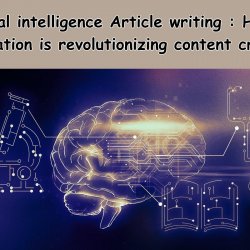How Technology Important in Education


How Technology Important in Education
Introduction
- Introduction:
Technology has become an integral part of our daily lives, and it has also greatly impacted the field of education. In recent years, technology has significantly transformed the landscape of education, bringing about many positive changes. With its rapid advancement, technology is playing a crucial role in enhancing the overall learning experience for students.
- Importance of Technology in Education:
The use of technology in education has brought numerous benefits and advantages, making it an important aspect to consider in modern day teaching. One of its significant impacts is on accessibility. Through technology, students now have access to a wide range of educational resources from anywhere at any time. This has made learning more convenient and flexible, allowing students to study at their own pace.
Moreover, technology has also made learning more interactive and engaging. With the integration of multimedia tools such as videos, animations, and virtual simulations, students can now have a better understanding of complex concepts and ideas. It also offers a variety of assessment tools that can provide instant feedback to both teachers and students, facilitating student progress monitoring and personalized learning.
Challenges of Educational Technology
While educational technology has the potential to revolutionize learning and make education more accessible, it also presents several challenges that need to be addressed for its effective implementation. Some of the key challenges of educational technology include:
- Access and Infrastructure: Disparities in access to technology and reliable internet connectivity can create a digital divide, limiting the educational opportunities for students from disadvantaged communities or regions with limited infrastructure.
- Digital Literacy and Skills Gap: Inadequate digital literacy among educators and students can hinder the effective utilization of educational technology tools and resources, emphasizing the need for comprehensive training programs and support for developing digital skills.
- Cost and Sustainability: Implementing and maintaining educational technology initiatives can be costly, posing financial challenges for educational institutions, especially those with limited budgets. Ensuring the sustainability of technology integration requires careful planning and long-term investment strategies.
- Data Privacy and Security: Safeguarding student data and maintaining privacy in educational technology systems is a critical concern. Data breaches and privacy violations can undermine trust in educational institutions and compromise the safety of students’ personal information.
- Quality of Content and Resources: Ensuring the availability of high-quality digital content and resources that align with curriculum standards and learning objectives is essential. The lack of vetted and reliable educational materials can affect the efficacy of educational technology in delivering meaningful learning experiences.
- Pedagogical Integration: Integrating educational technology effectively into the curriculum and instructional practices requires a shift in pedagogical approaches and teaching methodologies. Educators need support and professional development to incorporate technology seamlessly into their teaching strategies.
- Technical Issues and Support: Technical glitches, software bugs, and hardware malfunctions can disrupt the learning process and create frustration among students and educators. Timely technical support and maintenance services are crucial for addressing these issues promptly.
What is The Benefits of Technology in Education
The integration of technology in education offers a wide array of benefits that contribute to enhancing the learning experience, expanding educational opportunities, and fostering academic achievement. Some key benefits of technology in education include:
- Enhanced Access to Information: Technology provides students and educators with access to a vast repository of educational resources, including online libraries, digital archives, and research databases, enabling them to explore diverse perspectives and expand their knowledge beyond traditional classroom materials.
- Personalized Learning Experiences: Technology facilitates personalized learning experiences through adaptive learning platforms, interactive educational software, and digital learning tools, allowing students to learn at their own pace, receive immediate feedback, and access customized learning materials tailored to their individual needs and learning styles.
- Improved Collaboration and Communication: Technology enables seamless collaboration and communication among students, educators, and educational institutions through online platforms, virtual classrooms, and educational networks, fostering peer-to-peer interaction, group projects, and real-time engagement, thereby promoting a collaborative learning environment.
- Engaging and Interactive Learning: Interactive educational technologies, such as multimedia presentations, virtual simulations, and educational games, make learning more engaging, interactive, and immersive, capturing students’ attention, promoting active participation, and fostering a deeper understanding of complex concepts and topics.
- Facilitated Distance Learning: Technology enables the delivery of distance learning programs, online courses, and virtual educational experiences, allowing students to access quality education regardless of their geographical location, providing flexibility, and accommodating diverse learning preferences and schedules.
Fostering Collaboration and Communication
Fostering collaboration and communication is essential in various contexts, including educational settings, workplaces, and community environments. To promote effective collaboration and communication, consider the following strategies:
- Establish Clear Objectives and Goals: Clearly define the objectives and goals of the collaborative effort to ensure that all participants have a shared understanding of the desired outcomes and expectations.
- Promote Open and Transparent Communication: Encourage open and transparent communication by creating a supportive and inclusive environment where all participants feel comfortable expressing their thoughts, ideas, and concerns.
- Utilize Collaboration Tools and Platforms: Implement collaboration tools and platforms, such as project management software, online communication tools, and collaborative workspaces, to facilitate real-time communication, document sharing, and task management among team members.
- Encourage Active Listening: Emphasize the importance of active listening to ensure that all participants feel heard and valued. Encourage individuals to listen attentively to others’ perspectives and ideas before providing their input or feedback.
- Cultivate a Culture of Respect and Trust: Foster a culture of respect and trust by promoting open dialogue, mutual respect, and constructive feedback. Encourage team members to embrace diversity, show empathy, and demonstrate understanding and appreciation for different viewpoints.
- Provide Constructive Feedback: Offer constructive feedback and constructive criticism to help individuals and teams improve their performance and achieve better outcomes. Encourage a feedback culture that emphasizes continuous learning and growth.
- Facilitate Team-Building Activities: Organize team-building activities, workshops, and collaborative projects to strengthen interpersonal relationships, build trust, and foster a sense of camaraderie among team members.
Personalized Learning and Individualized Instruction
What exactly do we mean by personalized learning and individualized instruction? These two terms may sound similar but there are some key differences between them. Personalized learning refers to tailoring educational content and strategies to meet the unique needs and interests of each student. On the other hand, individualized instruction is more focused on adapting teaching methods to fit a specific student’s learning style.
Now, with traditional classroom settings, it can be challenging for teachers to cater to the individual needs of each student. This is where technology comes in. By utilizing technology such as computers, tablets, and educational software, teachers are able to personalize their lessons and provide individualized instruction.
One of the main advantages of using technology is that it allows for a more interactive and engaging learning experience. Students are no longer restricted to simply reading textbooks or listening to lectures. With personalized learning through technology, students can access a variety of resources such as videos, simulations, and games that cater to their specific learning styles.
You can also read:
edureka data science course review
edureka data science course review





Ingen kommentarer endnu